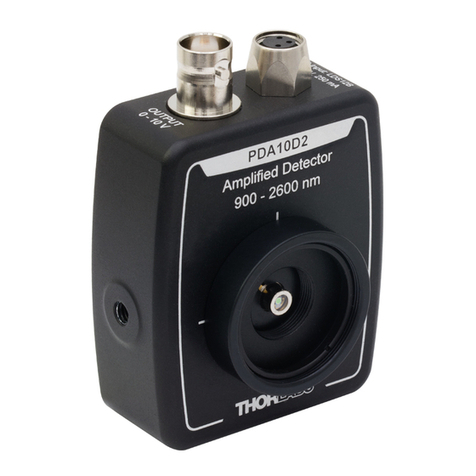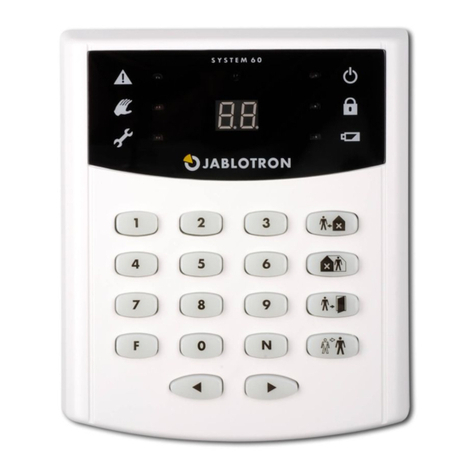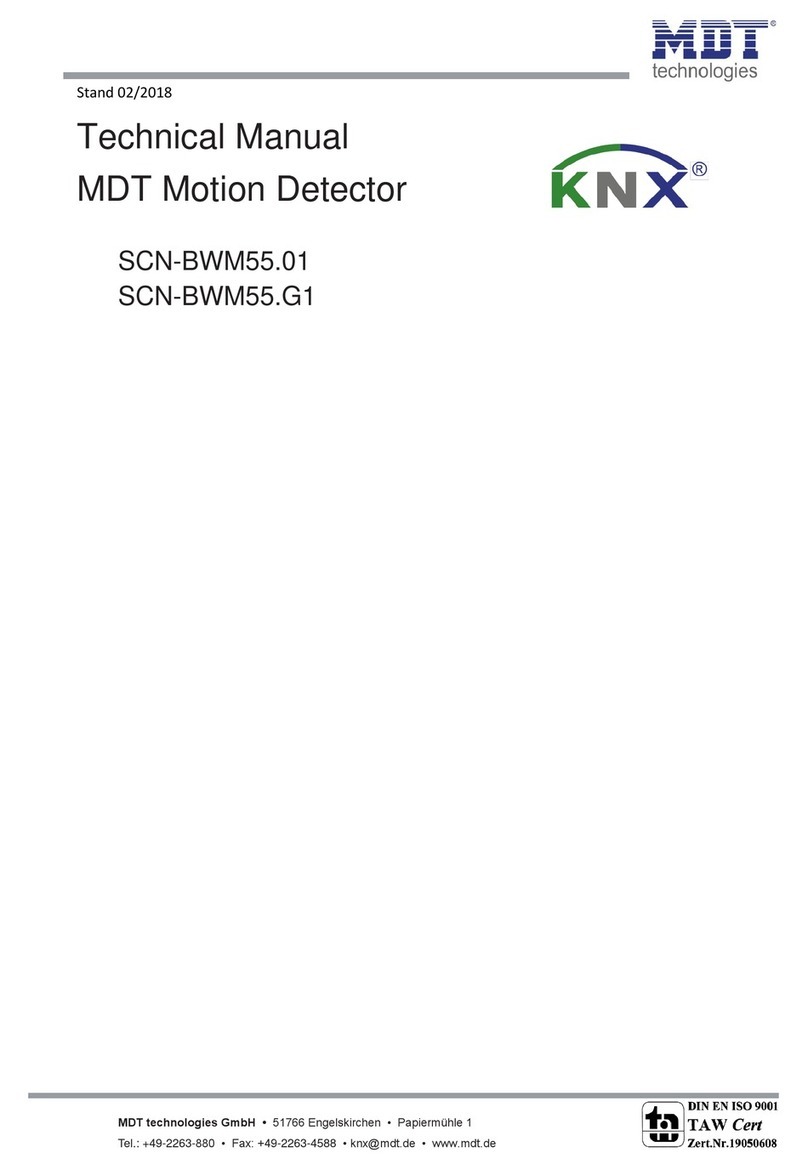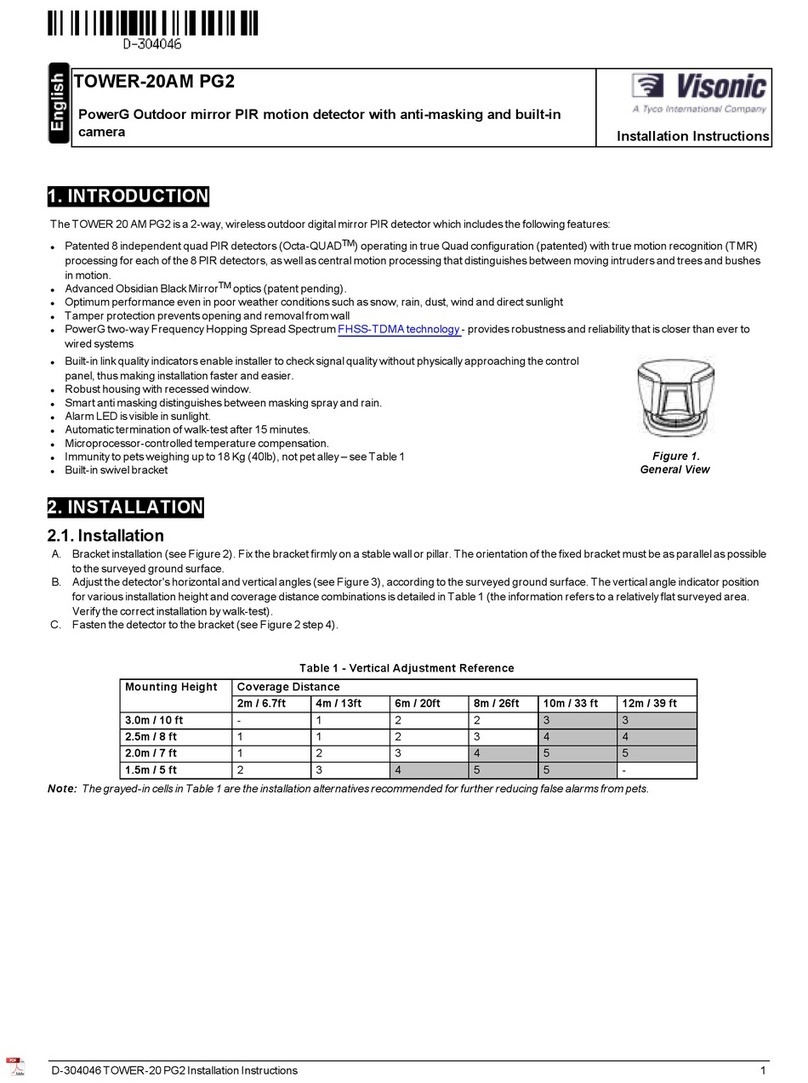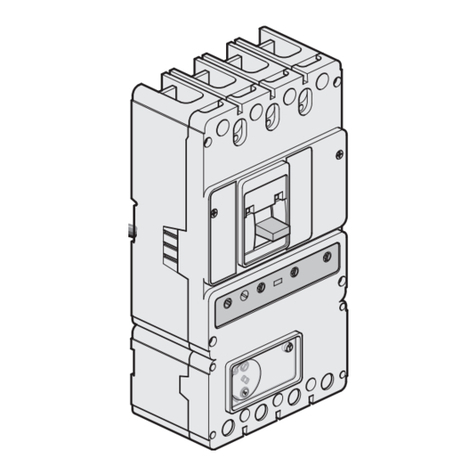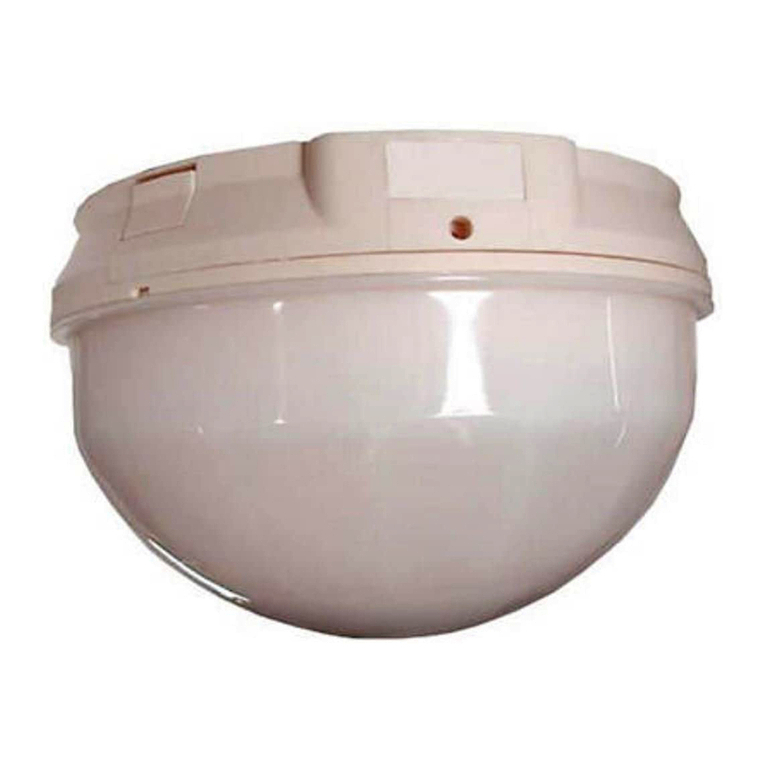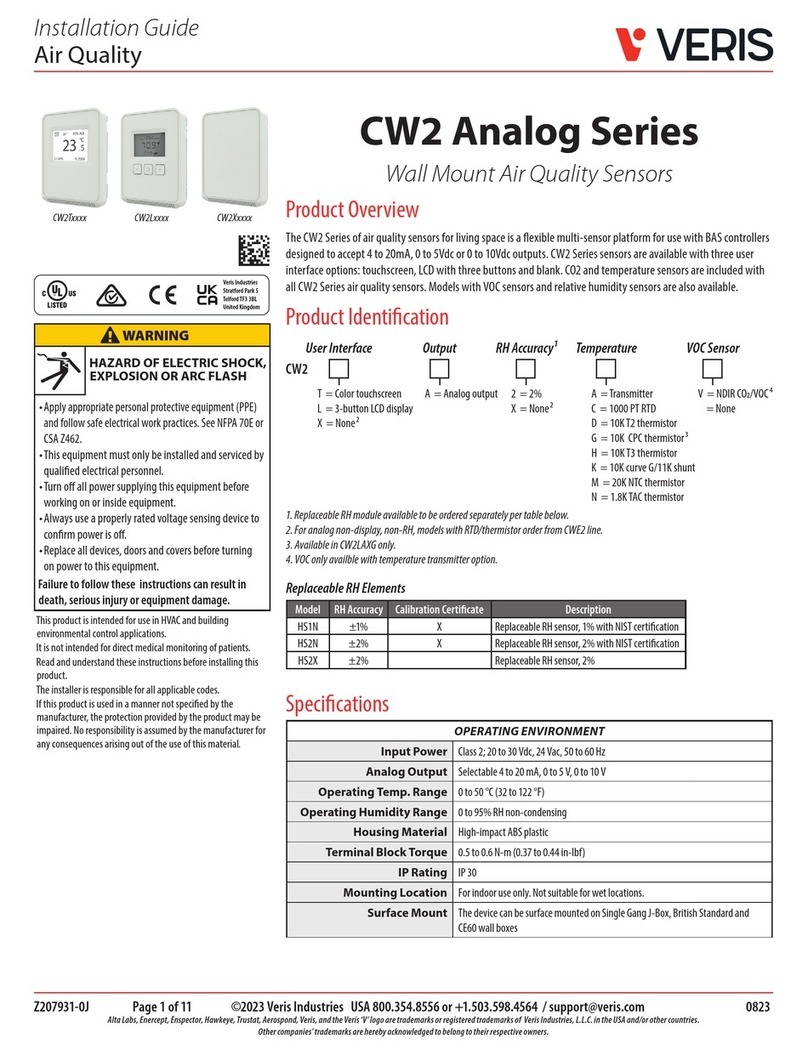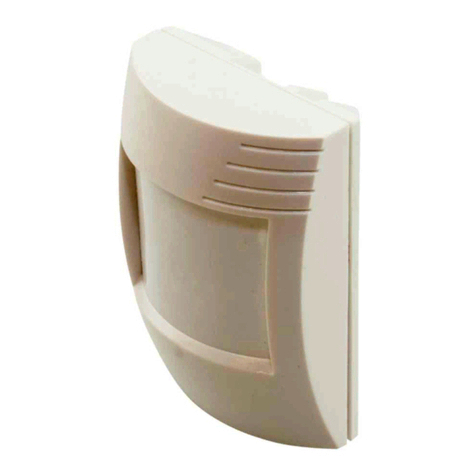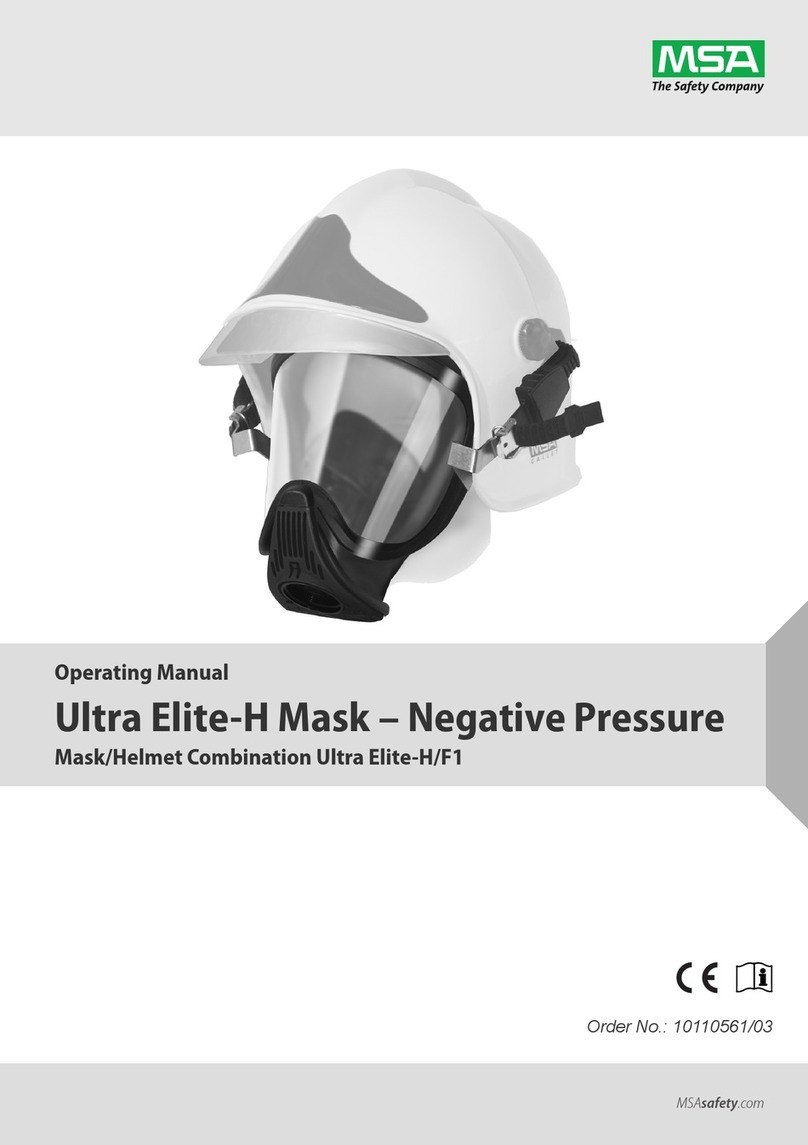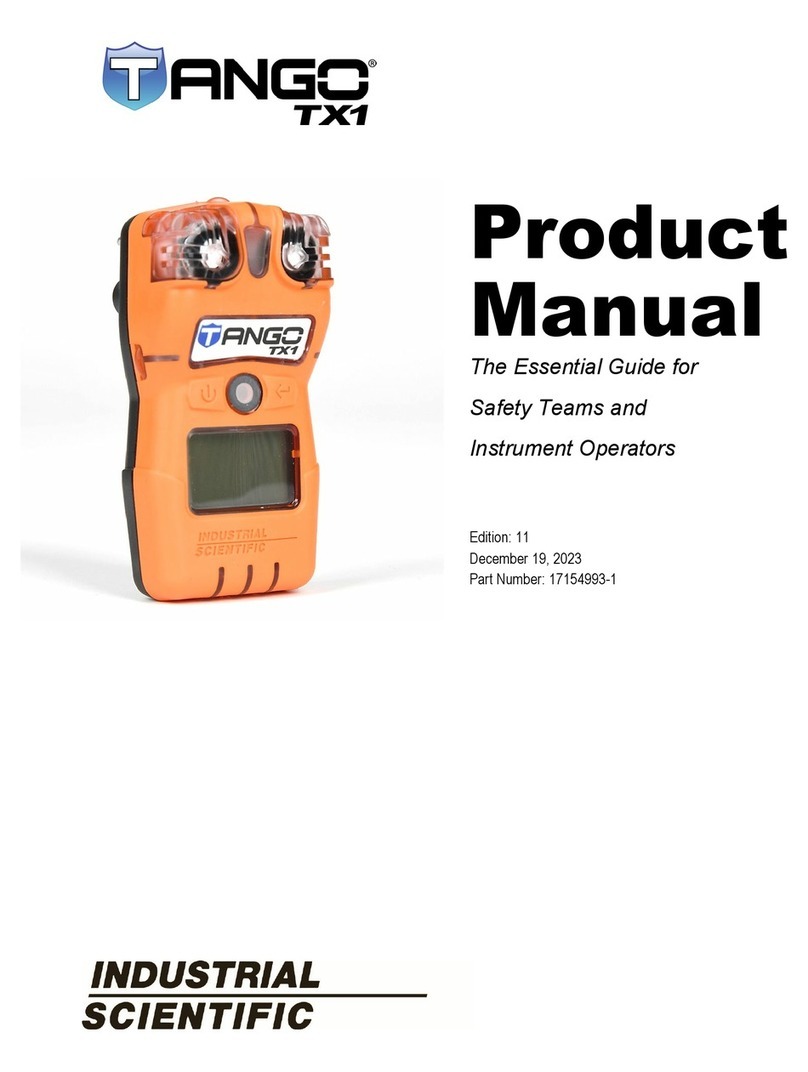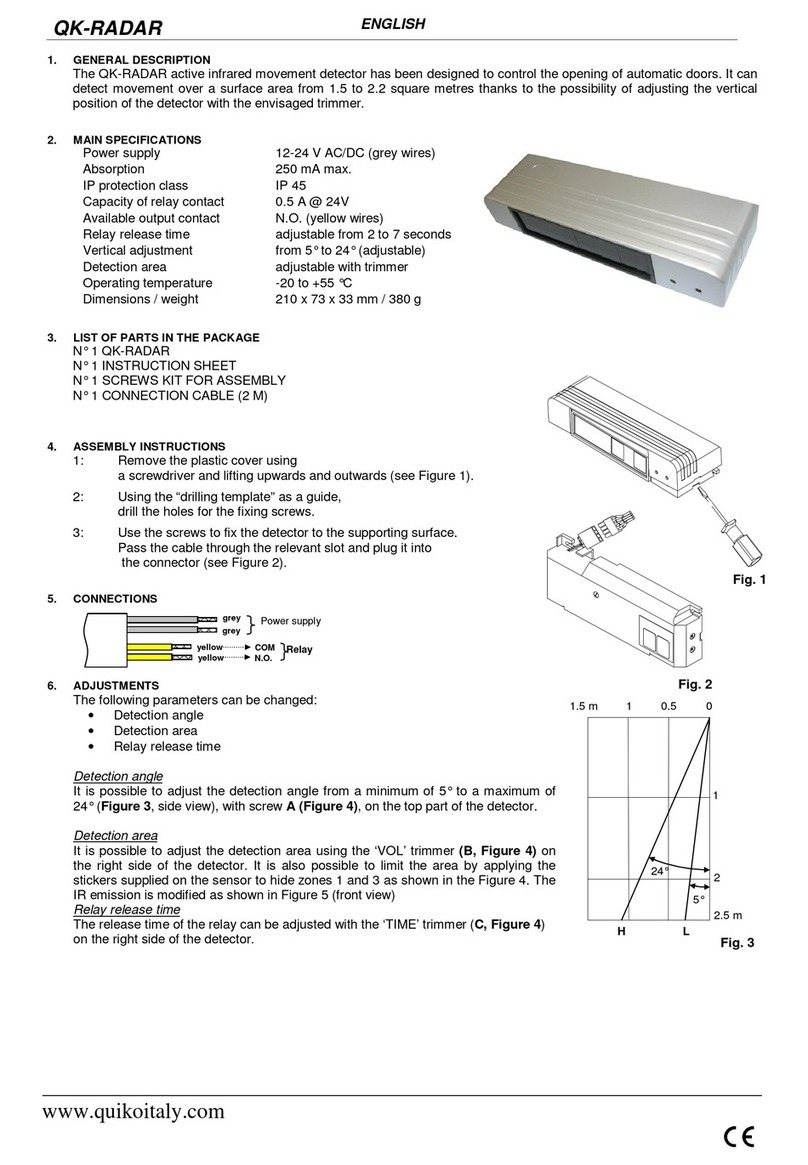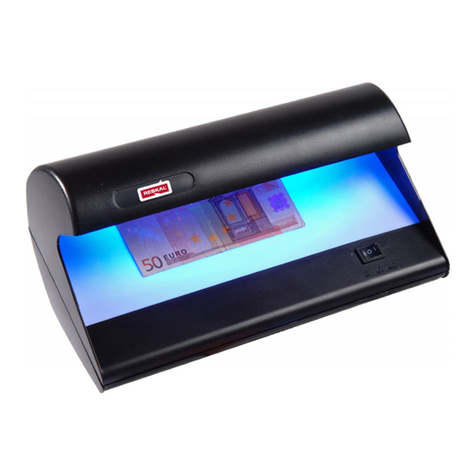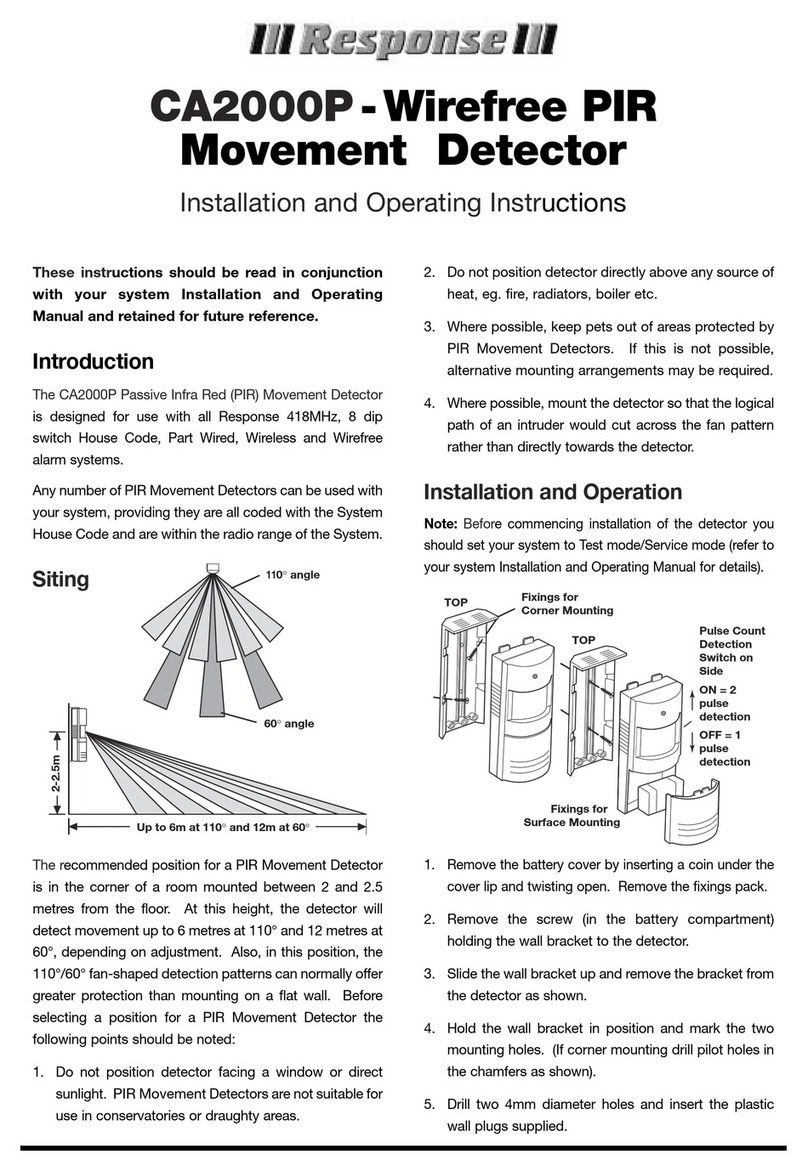Global GFE-CH Series Quick start guide

RECTANGULAR LED DETECTOR HEAD
BASE
OPENING HERE
LONG ALIGNMENT MARK SHORT ALIGNMENT MARK
HEAT SENSOR
GFE-CH Rate of Rise with Fixed Temperature Detector
Installation Wiring Diagram
TYPICAL WIRING DIAGRAM
Figure 1(a) shows the typical wiring diagram of the
2-wire heat detector when connected to a Fire alarm
control panel.
INITIATING
LOOP
EN54 LISTED
COMPATIBLE
CONTROL
PANEL
+
-
FIRST DETECTOR BASE LAST DETECTOR BASE
EOL
RESISTOR
5
252
61 34 61 34
+-+
REMOTE
INDICATOR
CLASS A OPTIONAL WIRING
N
O
TE: IF REM
O
TE INDI
C
AT
O
R I
S
N
O
T
US
ED. P
O
LARITY T
O
DETE
C
T
O
R MAY BE REVER
S
ED.
-
Figure 1(b) shows the typical wiring diagram of the
4-wire heat detector (separate power & relay wiring).
WARNING
TO PREVENT DETECTOR CONTAMINATION AND
SUBSEQUENT WARRANTY invalidation, THE
DETECTOR MUST REMAIN COVERED UNTIL THE AREA
IS CLEAN AND DUST FREE.
INSTALLING THE BASE
1. To insure proper installation of the detector head to the
base, all the wires should be properly dressed at
installation:
(A) Position all the wires flat against terminals.
(B) Fasten the wires away from connector terminals.
2. If you use a jumper wire to connect the two poles of
terminals 2 and 5 when testing the detector loop
continuity, be sure to remove the jumper wire prior to
the installation of the detector head.
3. The end-of-line device shown in fig. 1(a) and 1(b)
should be compatible with the control unit. The
end-of-line supervisory relay used should be rated for
the DC power voltage used.
4. Open area detectors are intended for mounting on a
ceiling or a wall in accordance with Local
requirements.
5. The base of the detector can be mounted directly onto
an electrical junction box such as an octagonal (75mm,
90mm or 100mm), a round (75mm), or a square
(100mm) box without using any type of mechanical
adapter.
INSTALLING THE HEAD
1. Align the components as shown in Figure 2.
2. Mate the detector head onto the base and twist
clockwise to secure it.
3.Do not install the detector head until the area is
thoroughly cleaned of construction debris, dusts, etc.
The maximum number of detectors that can be
connected to the same detection zone is typically
30.(see panel installation instructions)
Fig. 2 Fitting detector head to base
ADJUSTING THE RELAY FOR NO/NC Operation
The normal condition for the relay is “normally open”
(NO).
1. To adjust the normal condition of the relay to
“normally closed”(NC), insert a screwdriver into the
rectangular hole located on the side between the front
cover and base and rotate to remove the front cover.
2. Refer to figure 3. There is a jumper head next to the
relay on the PCB. Remove the jumper head and reinsert
it in the NC position.
3. Carefully replace the front cover.
Relay contact rating:
1A@30VDC,
0.5A@125VAC.
TESTING
TESTING
All remote signaling systems, releasing devices and extinguishing
systems should be disconnected during the test period and reconnected
at the conclusion of testing.
2. After energizing the detector head for approximately
one minute, check to see the indicator red LED
flashing once every 4-6 seconds. If red LED fails to
flash, it indicates the non-functioning of the detector or
faulty wiring. Re-check the wiring or replace the
detector if necessary.
3. The detector to be tested should be subject to a flow of
warm air at a temperature of between 65°C and 80°C.
(This requirement can be met by some domestic hair
dryers).
Proceed as follows:
(1).Switch on the warm airflow and check that
Fig. 3 Schematic of detector structure
When front cover is open.
HEAT SENSOR RELAY
Jumper for
relay
status
LED

temperature is correct and stable.
(2).From a distance of several inches, direct the airflow
at the guard protecting the thermistor. The detector
should alarm within 30 seconds.
(3).Upon alarm immediately remove the heat source
and check that the red LED of the detector is
illuminated. Reset the detector from the control
panel.
(4). If a detector fails to activate within 60 seconds, confirm
connections and programming. If necessary replace and return to
distributor for recalibration.
(5). After testing, check that the system is set for
normal operation and notify the appropriate
authorities that the testing operation is complete
and the system is active again.
zNOTE
This heat detector is particularly designed to initiate and
activate emergency action, but will do so only when it is
used in conjunction with an authorized fire alarm system.
This detector must be installed in accordance with Local Fire
Authority recommendations.
Heat detectors are primarily designed for property
protection. For Life protection early warning is required,
this can be obtained by the installation of appropriate Smoke
detectors. (GFE-CS) Heat detectors do not provide early
warning of fire and cannot detect smoke, gas, combustion
particles, or flame. They will alarm when the temperature at
the heat detector reaches 57oC (135oF) or above. Given the
rapid growth of certain types of fires, heat detectors cannot
be expected to provide adequate warning of fires resulting
from smoking in bed, inadequate fire protection practices,
violent explosions, escaping gas, and improper storage of
flammable liquids like cleaning solvents, other safety
hazards, or arson.
Heat detectors are components in professionally installed fire
alarm systems. They will not function if they have been
improperly wired into the fire alarm system or if power to
them is disconnected for any reason.
Heat detectors should be tested and maintained following
the instructions in this manual. To be safe, they should be
replaced after they have been installed for ten years.
Note: This product is factory sealed and does not
contain user serviceable parts. Opening THE DETECTOR
HEAD WILL VOID THE WARRANTY.
REFERENCE TO THE TECHNICAL BULLETIN ISSUE NO.
NB022A001 REV.2.0
SPECIFICATION
Model 2/4
wire Voltage
DC Standby
Current
(Max.)
Alarm
Current
(Max.)
Surge
Current
(Max.)
Start-Up
Time
(Max.)
Permissible
Current
(Max.)
LED Flash
Frequency Alarm contact Base model
EN-54 & CE listed
GFE-CH-2 2 10~35V 55µA 50mA 150µA 60 Seconds 80mA 4-6 Seconds —P/N772912
GFE-CH-2-L 2 10~35V 55µA 50mA 150µA 60 Seconds 80mA 4-6 Seconds —P/N774912
GFE-CH-4-12 4 10~15V 55µA 50mA 150µA 60 Seconds 80mA 4- 6Seconds Form A P/N774912
GFE-CH-4-24 4 21~27V 55µA 50mA 150µA 60 Seconds 80mA 4-6 Seconds Form A P/N774912
CE Listed
GFE-CH-4-AR-12 4 10~15V 55µA 50mA 150µA 60 Seconds 80mA 4-6 Seconds Form A /Auto Reset P/N774912
GFE-CH-4-AR-24 4 21~27V 55µA 50mA 150µA 60 Seconds 80mA 4-6 Seconds Form A /Auto Reset P/N774912
Remarks: AR-auto reset function/ L-remote LED indicator output
Detector Alarm Specification:
Fixed Temperature: 57oC
Rate of Rise Characteristic:
ROR °C/min Lower Limit (Mins:Secs) Upper Limit (Mins:Secs)
1 29:00 40:20
3 7:13 13:40
5 4:09 8:20
10 2:00 4:20
20 1:00 2:20
30 0:40 1:40
En 54 part 5 Certificate number: 0845-CPD-232.1479
LIMITED WARRANTY STATEMENT
Global Fire Equipment Ltd. declares that this product is free from defects in material and workmanship. And it will repair or replace any product or
part thereof which proves to be defective in workmanship or material for a period of 24 months from the date of purchase. Please visit the Global
Fire Website for a full description of Global Fire Equipment’s LIMITED WARRANTY, which, among other things, limits the duration of warranties
of merchantability and fitness for a particular purpose and excludes liability for consequential damages. Acceptance of order and/or original
invoice which will become part of your sales agreement. Please contact Global Fire Equip directly for a return merchandise authorization (RMA)
number before returning goods to the factory . Shipment must be prepaid and Global Fire repair or replace your returned detector.
Global Fire Equipment Ltd.
Urb. Vale da Amoreira, Lt. 16 & 17,
Porta A, Cave, 8005-334 FARO, PORTUGAL
ISSUE NO.NBUM 20050527 REV.A
This manual suits for next models
6

